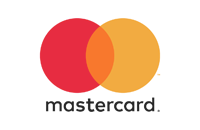| Running injury treatment1 February 2016 Running is great for your health. It can help you burn calories, lose weight, become aerobically fitter and reduce the chances of you suffering from a whole range of conditions. With all the benefits, though, there are inevitably a few side-effects, chiefly injury. Running injuries can range from the standard aches, pains and soreness to more serious conditions affecting primarily the lower body. Luckily, there are lots of methods of running injury treatment that can help you recover from or prevent injury. Runner's Knee (Patellofemoral pain syndrome)Runner's knee, or Patellofemoral pain syndrome, is a broad term used to describe pain in the front of the knee and around the patella (kneecap). It can cause pain and stiffness, especially in active people such as runners, hence the name. Treatment can range from rest and recuperation, wearing braces or supports, or strengthening/stretching weak or stiff surrounding muscles. A great product for alleviating this pain is the Ultimate Performance Ultimate Runner's Knee Strap. This provides three-way compression that targets all around the knee to help relieve chronic knee pain while the lightweight, slimline design won't inconvenience you. Hamstring Strain/PullYour hamstrings are the group of large muscles that run down the back of your thigh, and are responsible for bending your leg at the knee. They therefore have a huge role to play when you're running, and in turn a big risk of injury. Hamstring injuries are most likely when your muscles are stiff and cold, so it's very important to ensure that you're properly warmed up before exercise. One great tool for preparing your muscles for exercise, and helping them recover afterwards, is a foam roller. The Trigger Point the Grid Foam Roller is perfect for massaging your muscles, improving circulation and giving your muscles more oxygen. For best results, use it both before and after your runs. Plantar FasciitisYour Plantar Fascia is a thick band of connective tissue that runs along the bottom of your foot, and when you overload it, for instance by increasing mileage suddenly or wearing poorly-fitted shoes, you can rip tiny tears in the fascia. This can cause inflammation and sharp stabs of pain, making it hard to perform to your usual level. The Ultimate Performance Plantar Fascia Sock is a great option for reducing symptoms and helping to accelerate the healing process. It is designed to be worn overnight, and keeps your foot in a position that aids recovery. Achilles TendinitisYour Achilles Tendon connects the two major calf muscles to the back of the heel. If you put too much stress on it, it tightens and becomes irritated, causing significant pain and discomfort. You shouldn't try and run through the pain if you start to feel your Achilles during a workout, but rather rest and ice it frequently. Another great option is the Bauerfeind AchilloTrain Pro Achilles Support, which helps distribute pressure and reduce impact. A shaped insert also massages the muscle-tendon transition for excellent comfort and relief. BlistersBlisters are caused by friction, which usually happens when your shoes or socks rub against your skin. This can be exacerbated in moist conditions, so it's important that you're wearing the right pair of socks. Some specialist running socks can help wick away moisture thanks to their material, while reinforced heels and toes can also help reduce friction. The Feetures Elite Light Cushion Low Cut Socks are comfortable and supportive, helping to reduce chafing and blisters, with a moisture-wicking construction that will keep you happy throughout your run. The Balega Enduro-V-tech Quarter Socks are another great choice, with seam-free comfort, a moisture-management system and a second skin fit for ultimate comfort. Shop All Supports and BracesIf you browse the Think Sport website, you'll see we have a wide range of products to help with running injuries, especially our braces and supports. Click here to view the whole range on the website. | ||||||

















